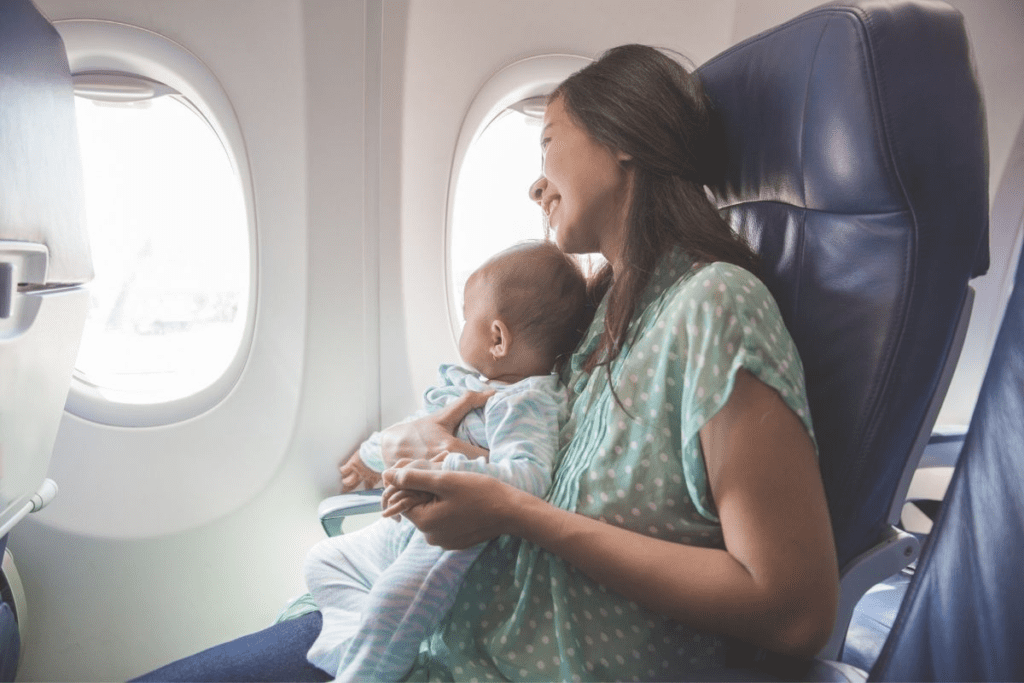Science-Backed Tips For Sleeping On A Plane

Are you one of those people who always feels exhausted after a long-haul flight? It’s understandable; after all, sleeping on planes can be notoriously difficult. But if you want to get the most out of your trip, getting some quality rest on the plane is essential. The good news is that science has some tips for helping you sleep soundly at 30,000 feet. From the ideal temperature to avoiding caffeine and alcohol, this article will provide you with all the information you need to finally enjoy an uninterrupted rest onboard your next flight.
How To Sleep On A Plane
There are a few ideas for sleeping on a plane. First, choose a seat near the window so you can lean your head against something. Bring a neck pillow and blanket to make yourself as comfortable as possible. Put on some earplugs or noise-canceling headphones to block out the noise of the engine and other passengers. Drink plenty of water during the flight to stay hydrated, and avoid caffeine and alcohol, which can make it harder to sleep. Finally, try to get some sleep before your flight so you’re not starting exhausted.
The Best Sleeping Positions On A Plane
The best sleeping positions on a plane are those that minimize exposure to germs and maximize comfort. The ideal position is one in which you can rest your head on a pillow and have your feet up on an elevated surface. This position allows you to sleep in a more natural position and reduces the risk of developing deep vein thrombosis (DVT).
If you are unable to sleep in this position, there are a few others that can help you get some rest on a plane. One is to sit in your seat with your back against the headrest and your legs stretched out in front of you. This position helps to reduce lower back pain and prevents cramping in the legs. Another option is to recline your seat and put your feet up on the armrest. This will take pressure off of your lower back and help you to avoid neck pain. Finally, if you have an aisle seat, you can curl up with your head on the armrest and pillows propped up against the window and seats next to you.
No matter which position you choose, make sure that you use a neck pillow or some other form of cushioning to help support your head and neck. This will ensure that you get the most comfortable sleep possible on a plane.
Tips For Avoiding Jet Lag
To avoid jet lag, it is important to get enough sleep before your flight. Once on the plane, try to sleep as much as possible. If you can’t sleep, try to stay awake until it is nighttime at your destination.
When you arrive at your destination, try to adjust to the new time zone as soon as possible by going outside and exposing yourself to natural light. It is also helpful to exercise and eat meals at regular times. Caffeine should be avoided in the evenings, as this can make it harder to sleep. Finally, if necessary, a short-term sleeping aid may help you adjust more quickly.
What To Do If You Can’t Sleep On A Plane
If you’re having trouble sleeping on a plane, there are a few things you can do to make yourself more comfortable. First, try to get some rest before your flight by avoiding caffeine and alcohol and getting a good night’s sleep. Once you’re on the plane, adjust your seat so that you’re as comfortable as possible. If it’s too bright in the cabin, use an eye mask or sunglasses to block out the light. You might also want to bring a neck pillow to support your head and prevent neck pain. If you’re still having trouble sleeping, listen to calming music or an audio book to help you relax.
Most importantly, stay hydrated and move around the cabin occasionally to stay loose and comfortable. If you’re still struggling, talk to a flight attendant about your options for sleeping aids, such as melatonin.
Flying With A Baby Or Toddler

If you’re flying with a baby or toddler, there are a few things you can do to make the experience more enjoyable for everyone. First, be sure to bring along some toys and activities that will keep your child occupied during the flight. If possible, try to book a window seat so that your child can look out at the view during takeoff and landing. And lastly, if your child is old enough, be sure to explain the safety procedures in detail so that they know what to do in case of an emergency.
Conclusion
Flying can be one of the most stressful forms of travel, with long delays and cramped seating making it hard to get a good night’s sleep. To help you enjoy a more restful flight, we have provided some science-backed tips on how to get better sleep while flying. From taking melatonin or other natural supplements to wearing noise-canceling headphones or using an eye mask, many strategies can make your next journey much more comfortable and relaxing. With just a few simple safety measures in place, you will arrive at your destination feeling refreshed and ready for the adventure ahead!
Research Snipers is currently covering all technology news including Google, Apple, Android, Xiaomi, Huawei, Samsung News, and More. Research Snipers has decade of experience in breaking technology news, covering latest trends in tech news, and recent developments.












